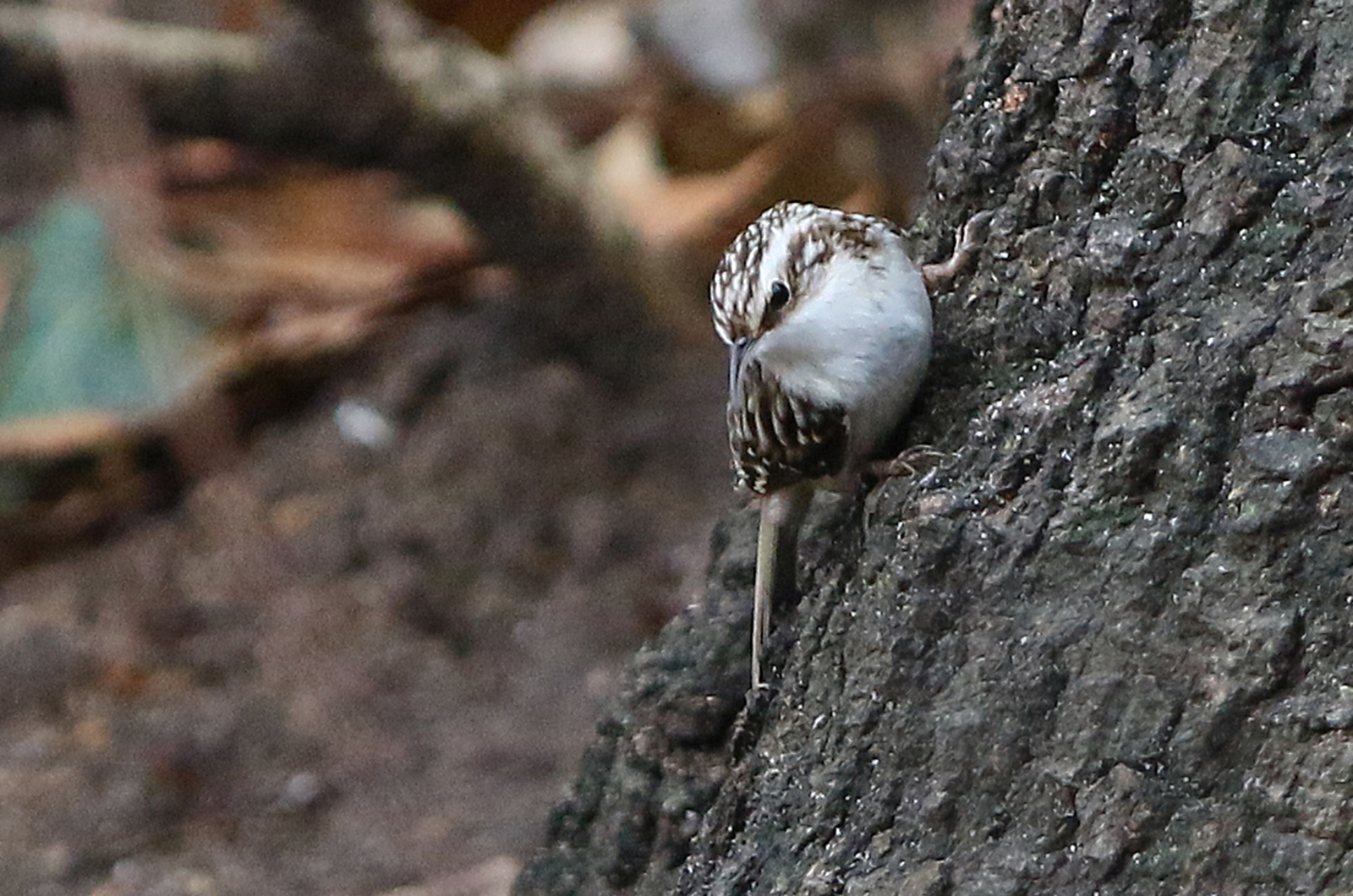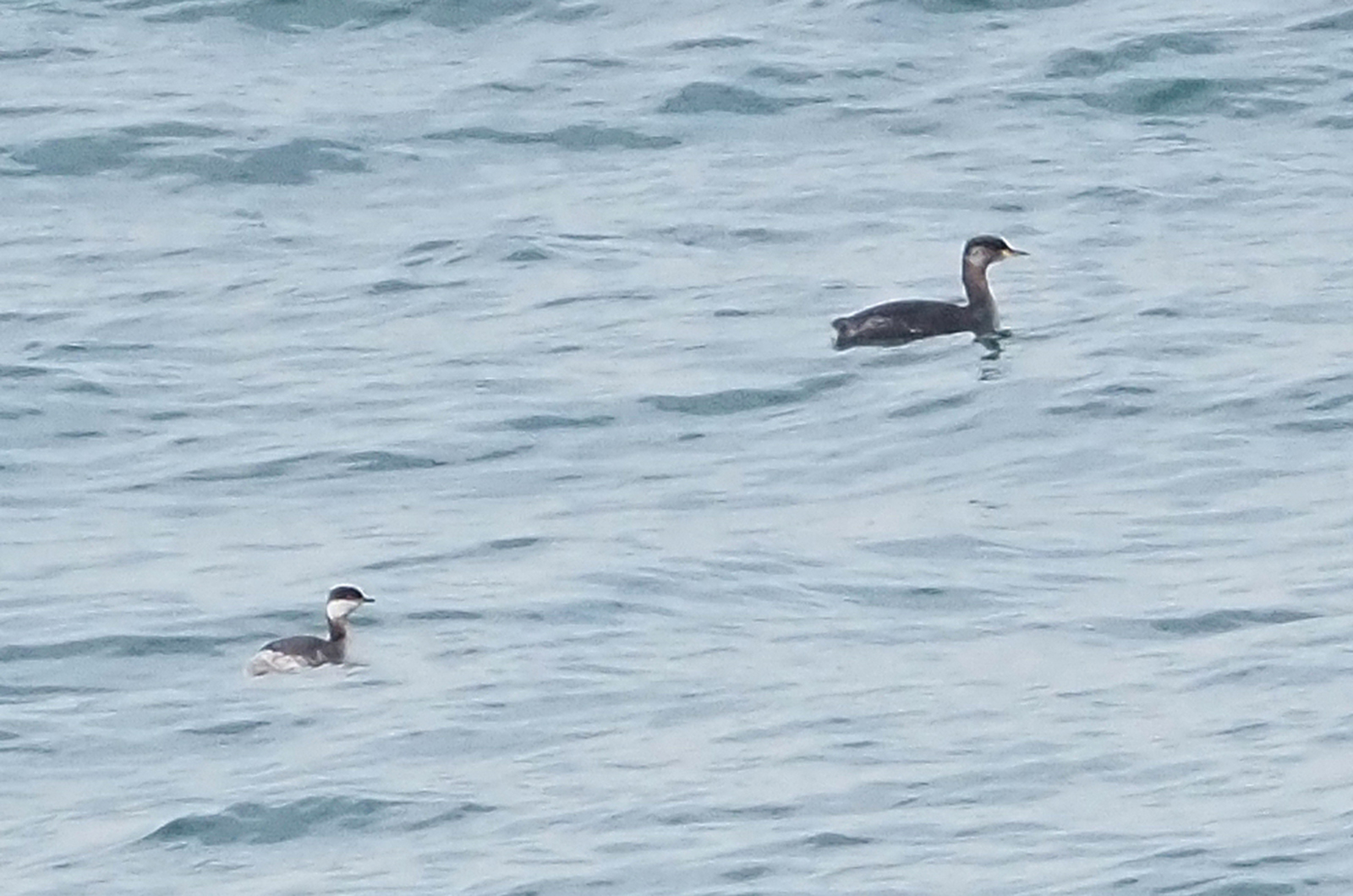A bird that has strayed from its usual range or migratory route, the Townsend’s solitaire now on the Vineyard is a vagrant that has a home somewhere in the western third of the country. This is the third sighting for this species on the Island. The first sighting lasted two and a half months in the winter of 1981-2, spotted by Susan Whiting and Elizabeth Waldron off Lambert’s Cove Road. The second sighting was on October 24, 2007 by Lanny McDowell and Allan Keith in Aquinnah.
A Townsend’s solitaire is a fairly drab bird that resembles a northern mockingbird; one of the distinguishing field marks is a distinct white eye-ring (instead of the mockingbirds’ black eye line) and a buffy wing patch. Their shapes are also different. The solitaire is a thrush — think robin and bluebird shape — while the slightly-larger mocker — a mimic thrush — has a different profile with a much-longer tail.
Bridget Dunnigan and Sea Williams were the first to report the solitary solitaire near the state forest headquarters on Feb. 21. Many birders have looked for and found it. On Feb. 22 seven birders spotted it: Bob Shriber, Lanny McDowell, Nancy Nordin, Margaret Curtin, Cynthia Bloomquist, Thaw Malin and Allan Keith. It was not reported for two days and there was speculation that it had moved on but on Feb. 25 Barry Burden, Matt Pelikan, Bridget Dunnigan and Sea Williams found it. Matt Pelikan also spotted eastern bluebirds and a pine warbler. Both Luanne Johnson and Valerie Burdette saw it on Feb. 26.
How do vagrants get here? Of course the obvious explanation is the mantra “birds have wings and they use them,” but that does not really explain anything. Large storms and high winds are the usual explanations for vagrancy but a new study suggests that the Earth’s magnetic field — known to guide birds during migration — can be another possible explanation. Our magnetic field is not constant. Increased sunspot and solar flare activity can alter the magnetic field enough that birds stop using it, forcing them to use alternate navigational tools that may lead them astray and into vagrancy.
Another new species for the year is a white crowned sparrow. This is one of our larger sparrows, distinguishable from the more common white-throated sparrows by an unmarked grayish underside and a more prominent black and white striped crown. The bird was spotted by Shea Fee, Nancy Nordin, Lisa Maxfield and others on the MV Bird Club’s trip to the Eel Pond boat ramp on Feb. 25. I found it again the next day as it conveniently emerged from the thickets to perch on a boulder where the summer resident kayaks park.
An American oystercatcher is not a new sighting for the year, as one was seen during the Jan. 1 Christmas Bird Count. Ned Casey likely heard one on State Beach on Feb. 15, as reported in last week’s column. On Feb. 25, Chris Scott spotted one on Sarson’s Island. We cannot say whether this is a new arrival a bit early or a bird that has so far successfully survived the winter.
The recent sightings of a great egret at Butler’s Mudhole is also either a recent arrival or an overwintering bird. One was seen there during the Christmas Bird Count. Lisa Maxfield and Nancy Nordin spotted it on Feb. 25 and I watched as one flew past the Eel Pond boat ramp toward Butler’s Mudhole the next day.
A few brown-headed cowbirds visited Allan Keith’s Chilmark feeders on Feb. 26 alongside a few grackles and many red-winged blackbirds. This is the first cowbird sighting since Michael Duffy’s three at Felix Neck on Dec. 31.
Luanne Johnson spotted a brown creeper at her feeders on Feb. 25, the same day that Thaw Malin and Cynthia Bloomquist saw one at their feeders. The next day, Luanne found one black-bellied plover, nine ruddy turnstones, six sanderling and four dunlin on Sarson’s Island; I saw two ruddy turnstones there later in the day.
On the warbler front, Ellen Bunch saw bluebirds and a pine warbler in the light snow at her Seth’s Pond feeders on Feb. 25. Back on Feb. 12 Bridget Dunnigan and Sea Williams found a pine warbler at their Oak Bluffs feeders.
Three yellow-rumped warblers were spotted by Margaret Curtin and Luanne Johnson on Feb. 19 at the Gay Head Cliffs while the MV Bird Blub saw four at Cove Meadow Preserve.
Other songbirds include two eastern bluebirds spotted by Brenda Hanson on Feb. 21 in an unexpected location: on Samoset avenue near Ocean Park. Bob Shriber had a brown thrasher pop out of a thicket at the Gay Head Cliffs on Feb. 20. On Feb. 24 James Frietas went to Felix Neck and spotted a brown creeper. On Feb. 26 Susan Straight reported a male towhee that has been at her feeders on South Road daily since Feb. 24.
A large flock of at least 3,000 common eiders — and one razorbill — were spotted at Wasque by the MV Bird Club; there were “easily more than that as they all were streaming in from the northeast in only 15 minutes.” A flock that size reminds me of scenes from the olden days of 40 or more years ago.
A possible hybrid between red-breasted and common mergansers was first spotted by Patsy Donovan at the Tisbury Water Works on Feb. 19. On the following days the bird was spotted by Nancy Nordin, Lisa Maxfield, Jeff Bernier, Lanny McDowell and Connie Alexander; after much discussion we still are not quite sure whether or not it is a hybrid ort a slightly different red-breasted merganser.
Please email your sightings to birds@vineyardgazette.com. (Note the slightly-changed email address.)
Robert Culbert is an ecological consultant with Nature Watch LLC living in Vineyard Haven.









Comments
Comment policy »